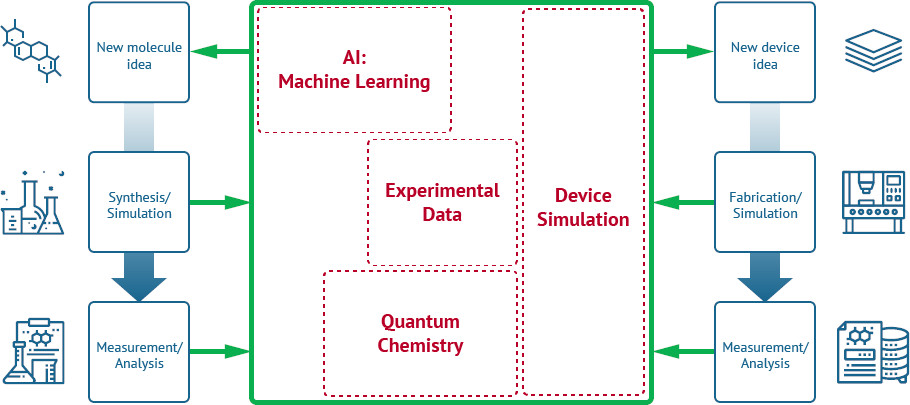In recent years, we have seen accelerated OLED materials development, aided by software tools based on machine learning and Artificial Intelligence. This is an excellent development which contributes to the continued improvement in OLED efficiency, brightness and lifetime.

Kyulux's Kyumatic AI material discover system
The promise of these new technologies is the ability to screen millions of possible molecules and systems quickly and efficiently. Materials scientists can then take the most promising candidates and perform real synthesis and experiments to confirm the operation in actual OLED devices.
The main drive behind the use of AI systems and mass simulations is to save the time that actual synthesis and testing of a single material can take - sometimes even months to complete the whole cycle. It is simply not viable to perform these experiments on a mass scale, even for large materials developers, let alone early stage startups.
In recent years we have seen several companies announcing that they have adopted such materials screening approaches. Cynora, for example, has an AI platform it calls GEM (Generative Exploration Model) which its materials experts use to develop new materials. Another company is US-based Kebotix, which has developed an AI-based molecular screening technology to identify novel blue OLED emitters, and it is now starting to test new emitters.
The first company to apply such an AI platform successfully was, to our knowledge, Japan-based Kyulux. Shortly after its establishment in 2015, the company licensed Harvard University's machine learning "Molecular Space Shuttle" system. The system has been assisting Kyulux's researchers to dramatically speed up their materials discovery process. The company reports that its development cycle has been reduced from many months to only 2 months, with higher process efficiencies as well.
Since 2016, Kyulux has been improving its AI platform, which is now called Kyumatic. Today, Kyumatic is a fully integrated materials informatics system that consists of a cloud-based quantum chemical calculation system, an AI-based prediction system, a device simulation system, and a data management system which includes experimental measurements and intellectual properties.
Kyulux is advancing fast with its TADF/HF material systems, and in October 2021 it announced that its green emitter system is getting close to commercialization and the company is now working closely with OLED makers, preparing for early adoption.

